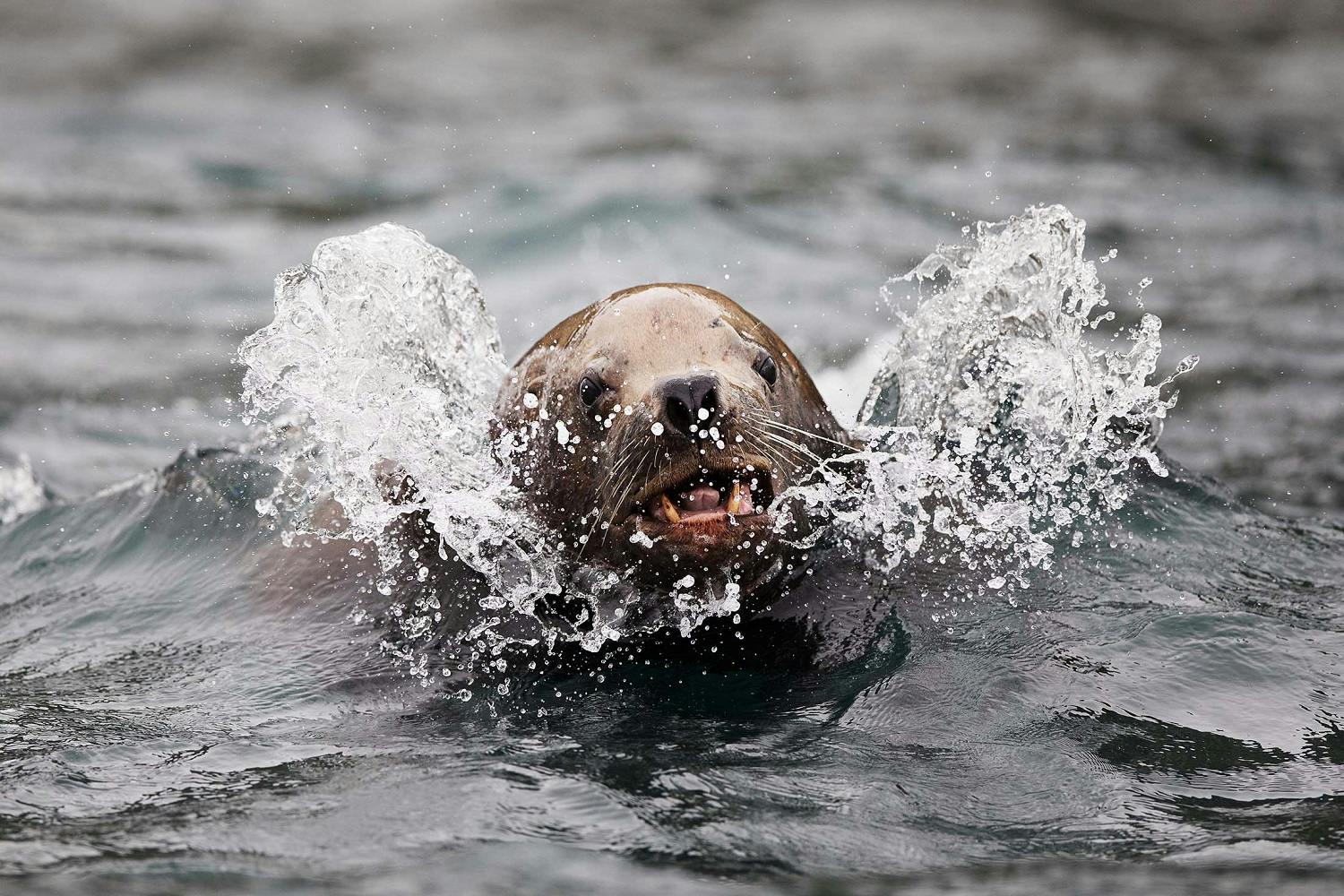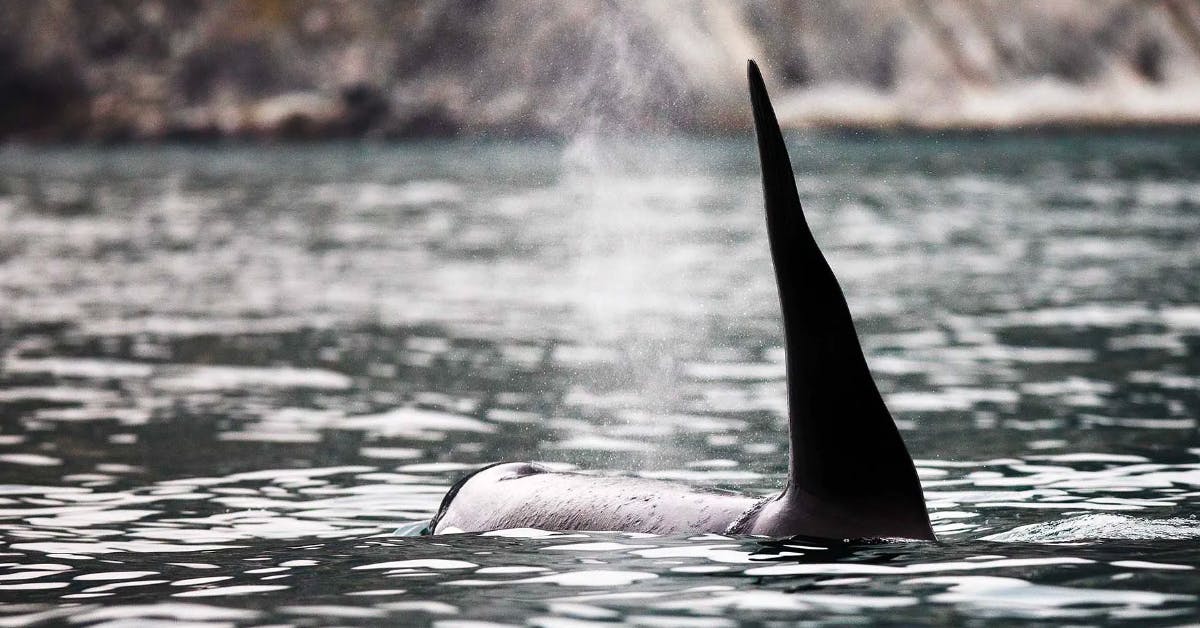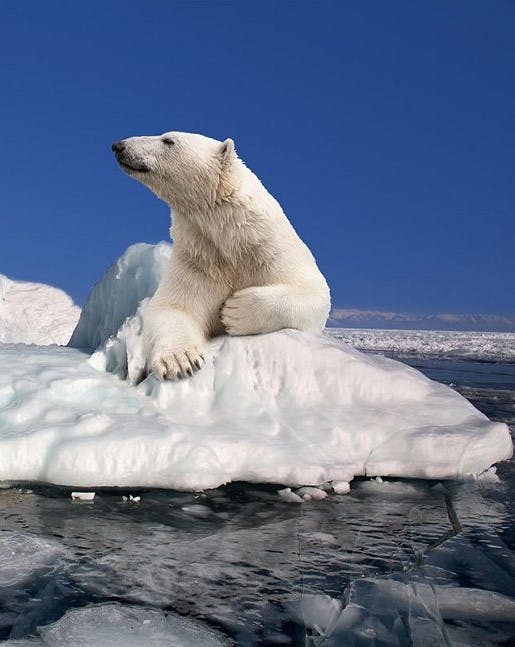Orca Pod Watching: Getting to Know the Behavior of Wild Killer Whales
A long black fin emerges from the deep as a puff of salt water fills the air. Then, a second dorsal fin follows as a smaller orca breaks the water’s surface nearby. The duo returns to the icy depths of the North Pacific, offering no indication of where they’ll emerge next.
It’s hard not to feel inconsequential when your Zodiac gets closer to the giant black bodies of orcas in the wild, which can grow up to 32 feet (9.7 meters) long and weigh as much as six tons. Traveling beside a pod of orcas on a Russian Far East cruise is a moving experience, one that also makes you acutely aware that humans aren’t the only species that values cooperation among individuals.

“Orcas are highly cognitive and social animals. They are the largest of the oceanic dolphins, and they live together in a social unit called a pod,” explains Cory Hom-Weaver, a Marine Biologist and Silversea Expedition Expert. “Although listed as one species, scientists are trying to separate them into sub-species, as different populations live in different regions of the world. Orcas hunt different prey and have different hunting techniques.”
The Russian Far East is one of the best places on the planet to gain insight into the orca’s world. Travelers can witness firsthand how a pod functions and how it ensures the species’ survival in one of the most isolated and remote regions on the planet.
Orcas, or killer whales, have developed necessary social skills to survive in the frigid waters of the North Pacific. “The pod is the social organization of orcas. They can’t live separately or alone,” says Alexander Burdin, a Russian Marine Biologist and leader of the Far East Russia Orca Project, a whale research program off the coast of Kamchatka and the Commander Islands. “They aren’t like other species of whales. It’s really important for them to keep families together.”

An Inseparable Family Unit
The pod is the center of orca society. Living in groups as large as 30 individuals, killer whales coexist in a hierarchy that is generally dominated by the eldest female in the group. She is usually the mother or grandmother of most of the pod members. “This female will lead the group of orcas to find food or safety. She is very much like a matriarch elephant, and she possesses knowledge to ensure the group’s survival,” says Hom-Weaver.
It’s no secret that orcas hunt together for optimum efficiency, but scientists have recently discovered just how complex and unique each pod and its members are. Killer whale behavior is so distinct between family groups that it is even noticeable to the unscientific eye. This is best observed on whale watching tours, while following different pods in a Zodiac: The way they breach, the shape of their dorsal fins, and their group formation are all unique.
Researchers currently separate killer whales into three categories: resident, offshore and transient killer whales. The groups are genetically distinct and speak different dialects of clicks and sounds. They also hunt different types of prey, from fish to seals and even other whales. Resident whales, which feast on fish and tend to live closer to shore, live their entire lives with their mothers in pods. Adult males, however, will venture out when groups of orcas intermingle, in order to mate with a female outside of his own pod. This behavior prevents inbreeding.
Russia’s Far East is home to both transient and resident orca populations. Burdin says that resident orcas feast on salmon and mackerel along the coast of Kamchatka and the Commander Islands, while transient orcas hunt seals and other whales in the Sea of Okhotsk.

The Benefits of Working Together
Living in a pod serves a practical purpose for orcas: survival. While they are apex predators in the ocean’s food chain, their ability to work together to hunt makes them more effective than potential competitors. “If orcas didn’t cooperate to survive, the species as a whole would not have been as successful as they have been,” Hom-Weaver explains.
Orcas often feed collectively, as is demonstrated by pods across the world. For example, a pod in Norway uses what scientists call carousel feeding. First, the pod corrals a school of herring into a tight ball. Then, the majority of the pod actively surrounds, while one or two orcas will swim into the ball of fish and slap them with their tails. This act stuns the herring. The orcas then take turns to eat, until they’ve all had enough. Working as a pack also helps orcas hunt larger prey like minke, gray or even bowhead whales.
The pod also provides these social animals with interaction and entertainment. Orcas are regularly documented playing with each other and other animals, and even seeming to beckoning humans from vessels.

Russia’s Mysterious Orcas
The orcas in the Russian Far East remain a bit of mystery—scientists have yet to identify all the individuals and their pods. “It is difficult to access such distant and isolated areas,” explains Burdin, who has led a summer expedition of scientists to study orca pods in the Russian Far East since 1999. “The Sea of Okhotsk is a huge area, and there are few settlements and little human infrastructure there, so you need to use a large ship.”

He says that one of the most unique behaviors he has seen in the Russian Pacific Ocean is a pod of orcas hunting young bowhead whales, which can grow up to 59 feet (18 meters) long and weigh as much as 100 tons—two times longer and 16 times larger than the biggest orca. “In the Sea of Okhotsk, we can often see transient orcas hunting young bowhead whales, which is unusual for any other part of the ocean. It’s a very important prey for transient whales there,” Burdin explains.
Hom-Weaver remembers an extraordinary encounter with an orca family, while whale watching in Russia—in the Avancha Bay off the Kamchatka Peninsula. The marine biologist led guests into a region where a pod was feeding, and she immediately recognized a mother and calf she had seen from a previous year’s expedition. “It truly was an unforgettable experience. The more we know about these animals, and the more we can conserve them, the better,” she says. “They are the top predators in the ocean, and without them, the ecosystem would be out of balance.”




















